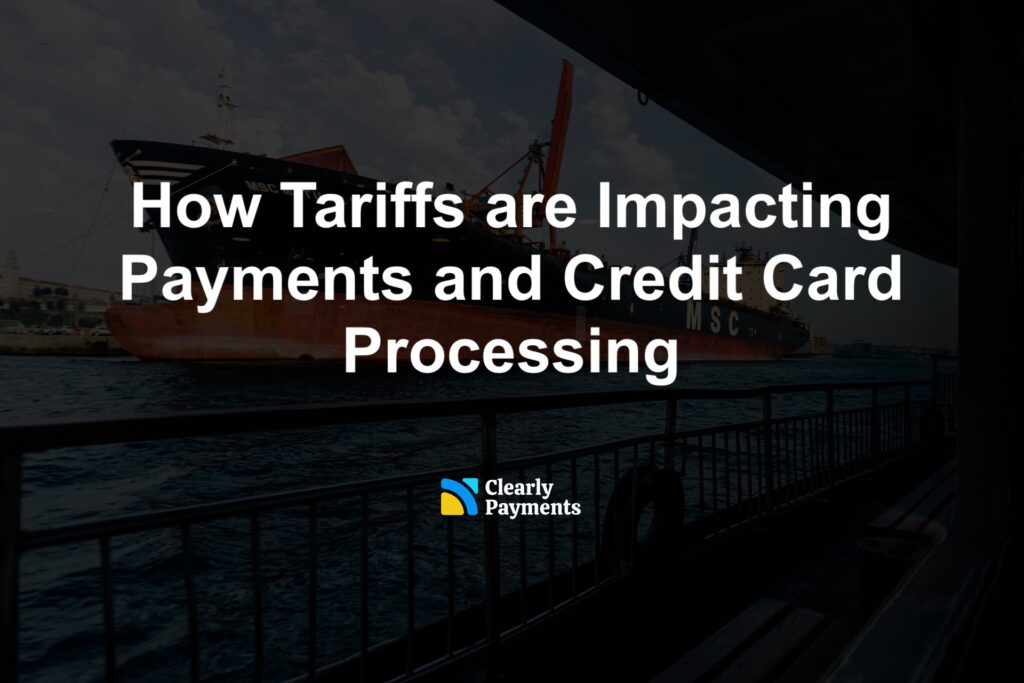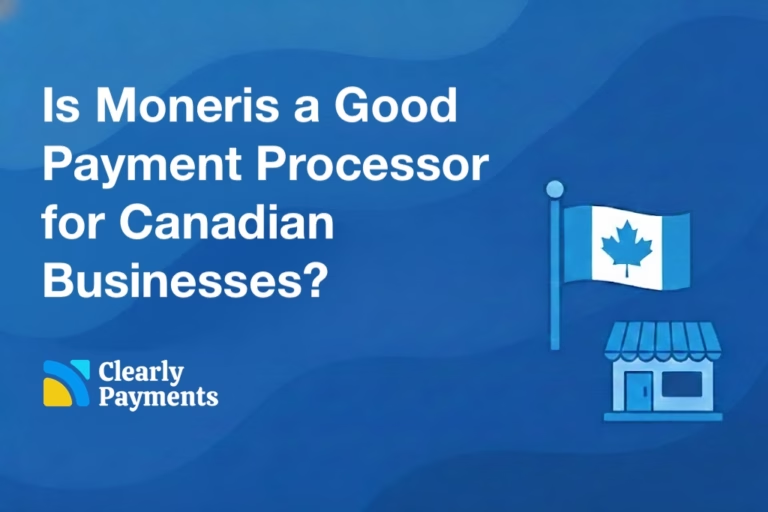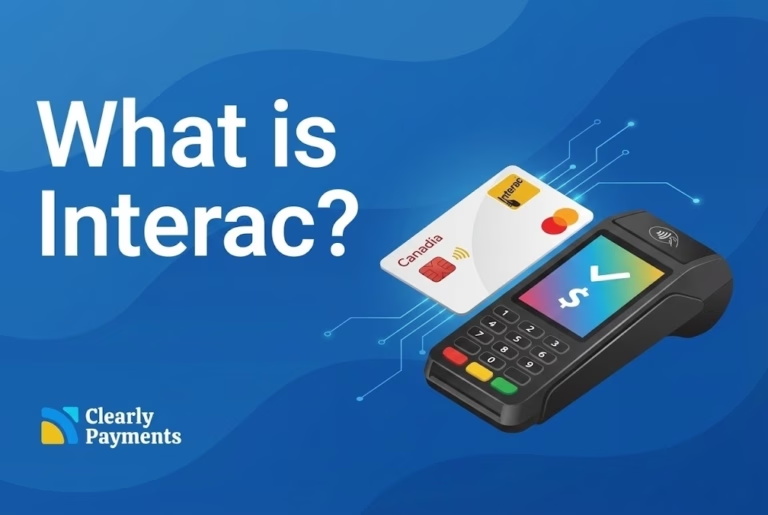Tariffs — government-imposed taxes on imported goods — are often seen as a supply chain issue. But they also have a ripple effect that extends to merchants’ pricing strategies, customer behavior, and yes, even how payments are processed.
While credit card processing fees aren’t directly subject to tariffs, many businesses are seeing indirect impacts that affect their bottom line.
Here’s how tariffs are quietly influencing the payments landscape — and what merchants can do about it.
Tariffs Raise Prices and Affects Processing Fees
When tariffs are applied to goods, merchants typically pass on some or all of those increased costs to customers. This raises average transaction values. That may seem like a good thing at first, but higher transaction sizes often mean higher interchange fees, especially for businesses on tiered pricing models.
For example, a 2.75% fee on a $100 transaction becomes significantly more noticeable when the same product now costs $120 due to tariffs. For high-volume merchants, those differences add up quickly.
Will Tariffs Increase Payment Processing Fees?
Not directly. Tariffs apply to goods, not services like payment processing. So your processor isn’t charging you more just because tariffs exist.
That said, tariffs can indirectly raise costs:
Higher product prices → Higher transaction values → Higher interchange fees.
Increased chargebacks or returns → Higher dispute management costs.
It’s a good time to review your fee structure and ensure you’re on a plan that’s optimized for changing transaction sizes.
More Chargebacks and Returns? It’s Possible
Higher prices can create more friction at checkout and may lead to a rise in:
Returns: Customers are more sensitive to price increases.
Chargebacks: If product expectations or delivery timelines (especially on imported goods) are not met, dispute rates can rise.
Both of these behaviors can increase your risk profile with a processor and lead to higher fees or even reserve requirements.
Cross-Border Tariffs & International Payments
Tariffs often target goods crossing international borders. For businesses that import inventory or sell globally:
Tariffs + currency fluctuations can destabilize profit margins.
Shipping delays or unexpected costs can lead to payment disputes.
Cross-border processing fees and FX conversion costs can be harder to forecast.
Merchants doing international business may need to optimize settlement timing, currency options, or processor location to reduce unpredictability.
Industries Feeling the Pressure
Not all industries are hit equally by tariffs. Here are some sectors where the downstream effects on payment processing are most noticeable:
1. Retail & E-commerce
Tariffs on imported consumer goods (like electronics, apparel, and home products) force retailers to raise prices or compress margins. This leads to:
- Higher transaction sizes, which can raise processing fees.
- More abandoned carts or price-sensitive chargebacks.
- The need to support multiple payment methods to stay competitive, including BNPL and digital wallets.
2. Manufacturing & Distribution
Tariffs on raw materials, machinery, and parts increase operating costs across the supply chain. Payment implications include:
- Larger B2B invoices, often triggering higher interchange fees.
- A shift toward ACH or wire transfers to manage processing costs.
- Greater exposure to cross-border settlement issues if goods are sourced globally.
3. Small Businesses
Smaller merchants often lack the pricing power to absorb tariff-driven cost increases. As a result:
- They may see reduced margins on every transaction.
- Limited negotiating leverage with processors makes fee optimization more urgent.
- Increased sensitivity to disputes and chargebacks, which can threaten their standing with payment providers.
How Merchants Can Adapt
Here are a few ways merchants can stay ahead:
Review your pricing strategy: Build margin to absorb both tariff and processing costs.
Optimize your payment setup: Consider switching from tiered pricing to interchange-plus for better transparency.
Monitor chargeback rates: Work with your processor to identify patterns early.
Offer flexible payment methods: Options like ACH or Buy Now Pay Later (BNPL) can help manage cost and reduce card fees.
How Clearly Payments Helps
Tariffs may be out of your control — but your payment costs don’t have to be. At Clearly Payments, we help merchants stay resilient in changing economic conditions by giving you more control, transparency, and support in your payment processing. Here’s how we help:
✅ Transparent, Predictable Pricing
Our interchange-plus model means you only pay what the card networks charge — with no hidden markups. As your average transaction size changes, your fees stay fair and clear.
✅ Smart Optimization for Changing Conditions
Whether tariffs are pushing up prices or driving customer churn, we help you adjust your payment strategy. That includes reviewing your fee structure, reducing unnecessary costs, and improving approval rates.
✅ Chargeback and Dispute Monitoring
Tariff-related delays or price issues can lead to more chargebacks. We provide tools and alerts to monitor dispute trends, reduce chargeback rates, and protect your account health.
✅ Human Support from Payment Experts
You won’t get stuck in a support queue. Our team works directly with you to solve issues, offer insights, and proactively recommend improvements — even as market conditions shift.




